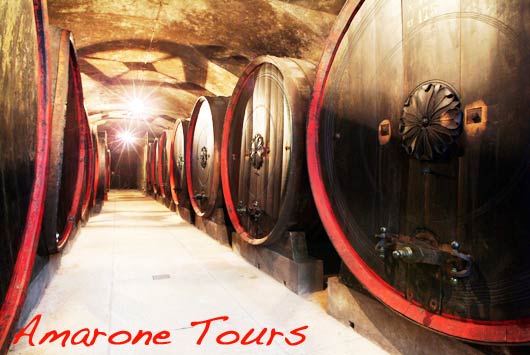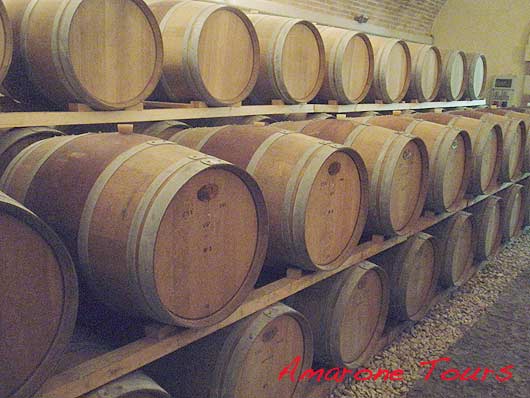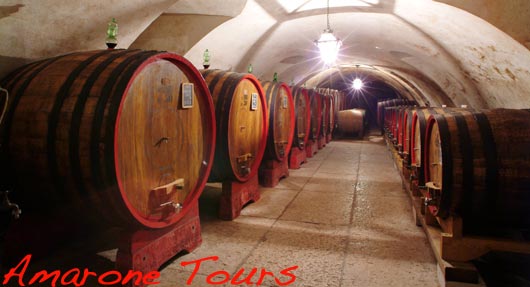
In 2010 Amarone has been registered as a DOCG Italian top quality label wine. This also meens that there are very strict rules that producers have to follow when producing their wines if they want to put the name Amarone on the label. These rules concern every aspects of the production of the Amarone: grape varietals that can be used, drying period for grapes, allowed wine making techniques and of course also ageing. According to these rules Amarone can be bottled and released on the market two years after the year of the harvest, that is also the year of the vintage. The rules concerning any DOCG wine are written by the Consortium of the specific wine producing area after consulting with producers. This means that sometimes the DOC and DOCG rules follow economic factors more than the pursue of quality. Amarone is a very expensive wine to produce. Harvest must be done by hand in order to ensure the selection of the best grapes that can withstand the long drying process. At the end of this period, grapes loose up to 40 percent of their water content, therefore 40 percent of potential product. Many wine producers and wine experts believe that two years is a too short ageing time for a wine like the Amarone but, by reducing the ageing time wine makers have the chance to anticipate the return of their investment.
French Barrique Vs Slavonian Oak Cask
Ageing is a process in which, by remaining for a certain amount of time in a barrel, wine will change its taste, hopefully becoming better. The barrel is made of wood which, coming into physical contact with the wine will leach compounds and flavours that will add to the complexity of the wine, complementing and hopefully not dominating wine’s natural flavours.
A barrel is made to be watertight, but not airtight. Wood is nonporous so it will not leak, yet it still allows a small amount of oxygene to permeate into the wine causing a mellowing and maturing effect due to mico-oxidaization.
All these processes of maturation require a certain amount of time depending on the size of the barrel. Larger barrels contain so much volume and only a small percentage of wine will ever come in contact with the wood, while small barrels have a much higher surface area-to-wine ratio.
Larger barrels are made of thicker wood which will let penetrate a smaller quantity of oxygene into the wine so that oxidization will be slower.
In other words smaller the barrel, the shorter will be ageing time for a wine.
In the past, ageing of Valpolicella wines and Amarone was done inside big wood casks. The most used size was the Fusto Veronese, a barrel of 600 liters capacity, but also bigger barrels of 30-40 hectoliters were common. The typical barrel for Recioto and Amarone was made of wood of oak, cherry, chestnut, beech and anything available in the area. From the end of XIX century oak became used by almost the total majority of coopers.
The ageing in such big barrels required many years of ageing, sometimes even 8 or 10. For the needs of modern wine market, 10 years are ages. There are only few producers willing and able to wait such a long time before selling their wines. In order to reduce ageing time it is necessary to reduce the size of the ageing container: the barrel. Since the end of 1980s it has been introduced in Valpolicella the French 225 liters barrel made of toasted oak wood, the so called barrique, already widely used not only in France but in wineries all over the world. The toasted wood decreases even more the ageing time, relasing faster a stronger wood taste to the wine.

At the beginning of the 80′s barriques spread in Valpolicella cellars quite fast. The result, especially at the beginning, was a very “oaky” Amarone in which the typical fruity flavours of Valpolicella grape varietals, especially the Corvina, were almost completely covered by the falvour of wood.
Today, still many producers use the French barriques, but the wine making technique has evolved in order to better adapt to Valpolicella and Amarone wines. Many wine makers now tend to use medium and light toasted barriques, or they choose old barriques that have a less aggressive effect on wine. Others use a mix of barrique and big un-toasted barrel in the ageing process of the wine. On the other side, many producers decided to stick to larger barrels and others, after trying the barrique, decided to go back to traditon.
The dilemma between French oak barrique and large Slavonian oak barrel is not just a matter of ageing time. Because of the slow oxidaization of the wine, the Amarones aged for longer time in bigger barrels has a longer longevity. After being bottled, they can remain in a cellar for decades, becoming each year better. There are few producers in Valpolicella that are still selling 1960s’ vintages and at that time Amarone used to age even for ten years in impressive 120 hectoliters barrels. It would be unthinkable for a bottle of Amarone aged for two years in a small barrique to last such a long time in a cellar. The Amarone aged in a big barrel will have a more elegant and balanced structure in which the typical cherry flavours of the Corvina are not covered by the oak, but enhanced by tertiary aromas.
Of course this doesn’t mean that wines aged in larger barrels are better than those aged in French oak barriques, they are just two different styles of Amarone. Wine lovers will choose one or the other according to their personal taste, the time they want to leave it in the cellar, the pairing with food that they want to make. An Amarone aged in barrique will have more power, freshness and will probably be the perfect pairing for food while an Amarone aged for long time in big barrels might be better tasted alone.
Amarone Tours and Ageing Cellars

At Amarone Tours, in the selection of Valpolicella wineries for our itineraries we often choose cellars with different ageing methods, one still using big un-toasted barrels, the other using the French barriques. In this way our guest, during a Valpolicella wine tasting tour, can experience different wine making styles for the Amarone.
If you have your favourite style please let us know and we will choose accordingly the wineries for your Amarone wine tour.
You can send us an e-mail at: info@amaronetours.it or call +39 389 983 5269








